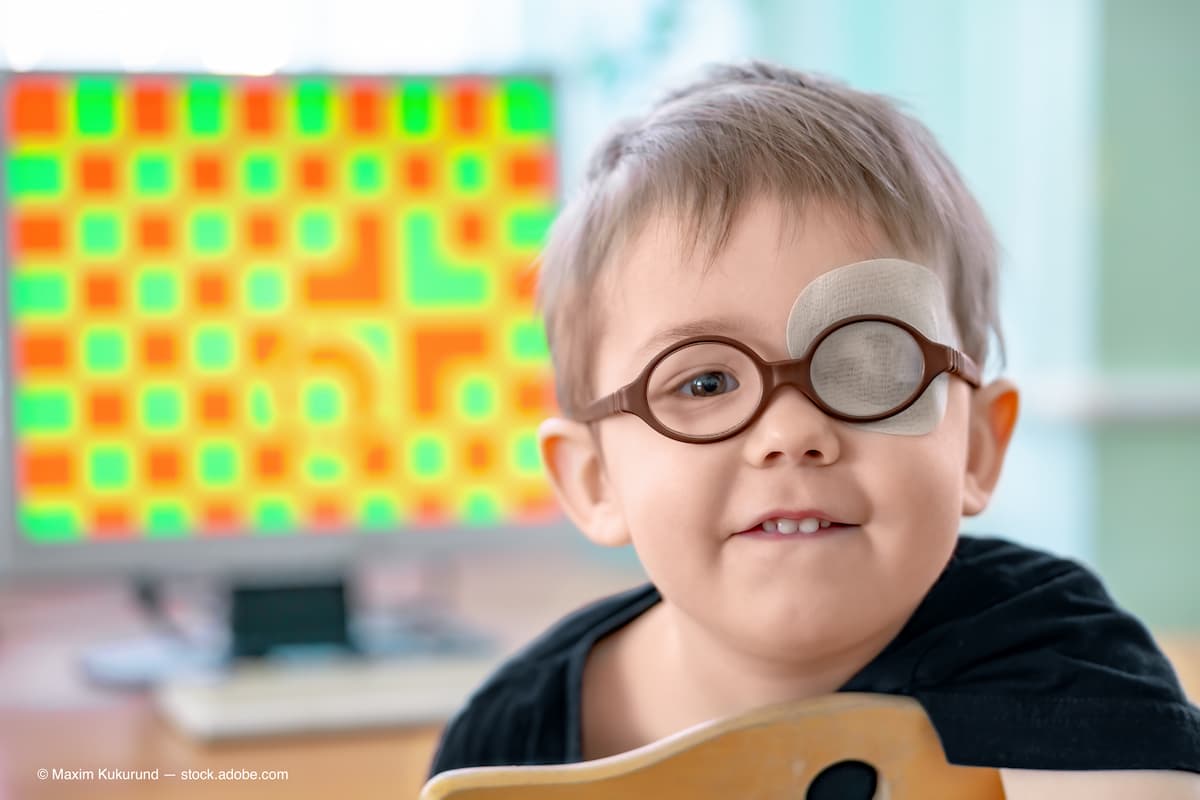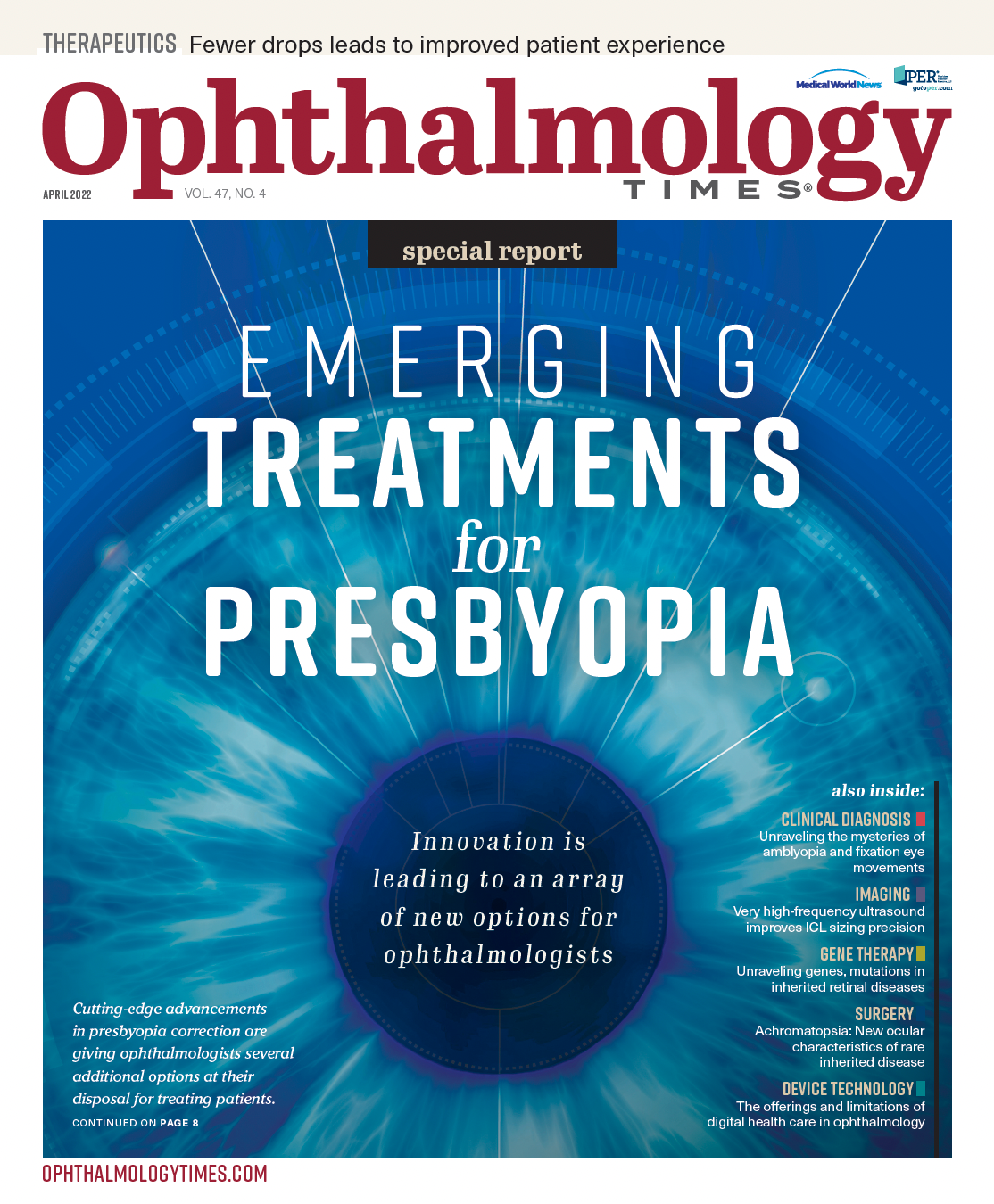Publication
Article
Digital Edition
Unraveling the mysteries of amblyopia and fixation eye movements
Author(s):
In patients with amblyopia, minuscule fixation eye movements play a major role with treatment, according to Fatema Ghasia, MD, associate professor of ophthalmology and director of the Vision Neuroscience and Ocular Motility Laboratory at the Cole Eye Institute at Cleveland Clinic in Ohio.
Reviewed by Fatema Ghasia, MD
In patients with amblyopia, minuscule fixation eye movements play a major role, according to Fatema Ghasia, MD, associate professor of ophthalmology and director of the Vision Neuroscience and Ocular Motility Laboratory at the Cole Eye Institute at Cleveland Clinic in Ohio.

The visual system contains a built-in paradox, she explained, in that gaze fixation is necessary to inspect the minute details of an object. When an individual is attempting to fixate on an image, and when the highest visual acuity is achieved, the eyes are not completely motionless, but instead, minute involuntary fixation eye movements counteract the fading of the peripheral details during fixation by overriding the neural adaptation.
Physiologic fixation eye movements produce motion that causes variability in a position only within the fovea—this is stable fixation. “In normal subjects, fixational saccades—the fast-time movements—alternate with intersaccadic drifts,” she said. “The microsaccades are binocular, with small amplitudes of less than 1 degree, and they are conjugate, that is, the amplitude and direction are the same between the 2 eyes, and they occur at [approximately] 1 to 2 per second.”
In patients with amblyopia, the picture differs in that fixation is more unstable compared with the fellow eye. Amblyopia is a neurodevelopmental disorder occurring secondary to an abnormal visual experience during early childhood, and it can arise from anisometropia, strabismus, deprivation, or mixed mechanisms that affect 2% to 4% of the population, Ghasia said. She demonstrated that when evaluating scatterplots of eye positions obtained from patients with anisometropic and strabismic amblyopia, the eye with amblyopia has more fixation instability compared with the fellow eye.
Characterizing amblyopic fixation instability
Ghasia and colleagues measured fixation eye movements using a remote desktop camera to record binocular, fellow eye, and amblyopic viewing conditions in 115 subjects with anisometropic amblyopia, strabismic amblyopia, or mixed amblyopia of different severities and controls. A representative case was that of a patient with severe amblyopia without nystagmus. The fixation was unstable in the amblyopic and fellow eyes, especially during the amblyopic eye viewing conditions. Increases in the drift and amplitude of the amblyopic eye were seen.
Another patient had fusion maldevelopment nystagmus, or latent nystagmus, which develops with disrupted binocularity during early infancy. This patient had seesaw oscillations seen during binocular viewing. The oscillations were more pronounced during fellow and amblyopia eye viewing, particularly during the amblyopic eye viewing condition.
Another feature of fusion maldevelopment nystagmus is the slow phase of the nystagmus. It is always directed toward the nose, Ghasia explained. “When the fellow eye is compared [with] the amblyopia eye viewing, there’s a reversal in the nystagmus direction, which is the hallmark of fusion maldevelopment nystagmus,” she said.
Patients with amblyopia can also have nystagmus that does not meet the criteria of fusion maldevelopment nystagmus. She described a patient in whom the nystagmus was most evident during the amblyopia viewing condition, as indicated by seesaw traces. “The key feature is that there is no direction reversal of the nystagmus between the fellow and amblyopia eye viewing conditions,” she said.
When Ghasia evaluated the distribution of these fixation eye movement characteristics based on the amblyopia type, she found that patients with anisometropic amblyopia were less likely to have nystagmus, strabismus patients were more likely to have nystagmus with and without fusion maldevelopment nystagmus, and those with mixed amblyopia had an equal distribution of different fixation eye movement waveforms.
Patching
Patching therapy is the most common treatment for amblyopia. “However, despite good [adherence], 40% of patients have recurrent/residual amblyopia—the predictors of which are the amblyopia severity and older age at diagnosis,” Ghasia said. Moreover, Ghasia’s study and those of other investigators have shown that fusion maldevelopment nystagmus worsens during monocular viewing. During patching therapy, the good eye is patched, and the amblyopia eye is viewing. This raises the question about whether the outcomes vary with patching in the presence of fusion maldevelopment.
“We hypothesized that patients without nystagmus would respond quicker and have more improvement over a short period compared [with] those without fusion maldevelopment nystagmus,” Ghasia said. In light of this, they recruited 53 amblyopic patients who had eye movement recordings during at least 12 months of follow-up, following the start of patching therapy, and evaluated patching duration, extent of visual acuity improvement, and stereopsis improvement.
Ghasia reported not observing a substantial difference in patching duration but perhaps less vision improvement in patients with mixed amblyopia. She also saw better stereopsis in patients with anisometropic amblyopia. However, in the same cohort, when the fixation eye movement waveform characteristics were categorized, patients with fusion maldevelopment nystagmus required much longer treatment durations than those without nystagmus. In addition, the visual acuity improvement was less over the treatment course, and there was worse stereopsis with little improvement at the end of treatment.
Dichoptic treatment
Interest has turned to development of newer treatments for amblyopia, one of which is dichoptic treatment. Using this therapy, different stimuli are presented to each eye. Lower-contrast stimuli are presented to the fellow eye, and 100% contrast is presented to the amblyopic eye to counteract suppression and allow for binocular combination, Ghasia explained.
Large-scale pediatric studies have shown mixed results regarding treatment effectiveness. This raised the question about whether fixation eye movement abnormalities explain the varying responses during dichoptic treatment. To answer this, they measured fixation eye movement during 4 trials, when the amblyopic eye contrast was the same at 100% and the fellow eye contrast was lowered.
Ghasia showed data from 2 patients with moderate amblyopia with small- angle strabismus. In the first example, as the fellow eye contrast was lowered, the amblyopic eye picked up fixation. In the second patient, as the fellow eye contrast was lowered, the strabismus angle increased and the amblyopic eye did not pick up fixation. Thus, the first patient is more likely to respond to the treatment than the second patient.
She also showed data from a patient with anisometropic amblyopia that exhibited increased fixation instability of the fellow and amblyopic eyes at lower fellow eye contrasts. The increased instability could potentially affect the ability of the amblyopic eye to attend to the presented targets and could have treatment implications.
Key takeaways
Ghasia noted that amblyopic patients with and without nystagmus have increased fixational instability. Fixation eye movement abnormalities are associated with patching treatment outcomes, and patients with fusion maldevelopment nystagmus need a longer duration of part-time patching. Despite modest vision improvements, stereopsis is poor in amblyopic patients with fusion maldevelopment nystagmus treated with part-time patching.
Fixation and vergence stability increase during dichoptic viewing particularly at lower fellow eye contrasts. Patients with strabismic or mixed amblyopia without fusion maldevelopment nystagmus demonstrate a fixation switch in which the amblyopic eye attends to the target presented during dichoptic viewing at lower fixation eye contrasts, whereas patients with fusion maldevelopment nystagmus were less likely to demonstrate the fixation switch. Thus, future studies quantifying fixation eye movements before and during treatment are critical. It may serve as a missing link to understanding the mechanisms responsible for varying therapeutic efficacy seen with current treatment regimens.
Fatema Ghasia, MD
E: ghasiaf@ccf.org
This article is adapted from Ghasia’s presentation at the Cleveland Eye Bank Foundation Virtual Vision Symposium. She has no financial interest in this subject matter.

Newsletter
Don’t miss out—get Ophthalmology Times updates on the latest clinical advancements and expert interviews, straight to your inbox.




